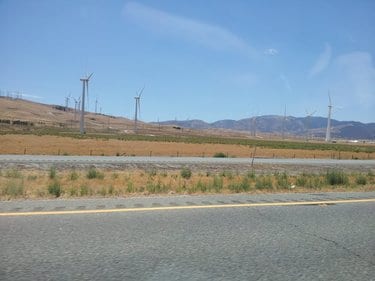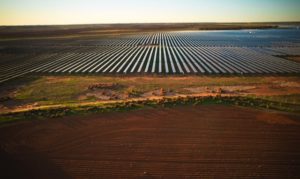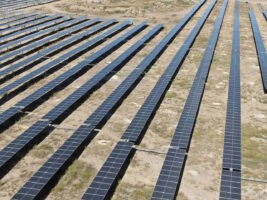Since 1998 there have been 49 court cases in five countries that tested the evidence for and against wind farm health impacts. All but one agreed that wind farms don’t make people sick. The Energy and Policy Institute just published a full report of my research into these court cases in the USA, Canada, the British Isles, Australia and New Zealand.
Wind farms are the most benign form of electrical generation that we’ve discovered to date, but they do change the views of rural areas where people live. They do make a little noise. Some people in rural areas believe that they get in the way of other uses for the areas, such as tourism, golf courses or skydiving clubs. Others think, incorrectly, that they are economic disasters. Some people think they are bad for birds. There is short-sighted and parochial opposition to them.

Since 2009, that opposition has had a focus in many English-speaking countries, the belief that wind farms make people sick. 80% of the court cases related to health have occurred since then. So why 2009? It’s the year that Dr. Nina Pierpont, a paediatrician and anti-wind activist, self-published her deeply flawed 294-page report on 23 phone interviews with self-selected people who blamed wind farms for their health problems and invented the term “wind turbine syndrome”. Based on this incredibly weak and biased evidence and a poor understand of how the human body works, Dr. Pierpont hypothesized that infrasound disturbs the inner ear. Likely more than any other individual, Dr. Pierpont is responsible for the minor health hysteria related to wind farms.
Professor Simon Chapman and his team at the University of Sydney have done the most rigorous study of the impacts of the psychogenic illness related to wind farms. They assessed all recorded health complaints for all wind farms in all of Australia between 1993 and 2012. They found that 73% of all health complaints were from six wind farms targeted by anti-wind organizations and that 90% of complaints occurred since 2009. 64.7% of wind farms had no recorded complaints at all. It’s clear from his work that anti-wind groups spreading health fears create health complaints. And it’s clear that where anti-wind groups haven’t been busy, health complaints don’t exist.
Court cases follow anti-wind protestors, just as health complaints do. The one case in Alberta, Canada, occurred after Carmen Krogh, a retired pharmacists and anti-wind campaigner from Ontario, traveled to Alberta to speak to a small group of people worried about a proposed wind farm. She created so much fear that they brought a case against the wind farm on health grounds, bringing many witnesses and reams of documented evidence to bear. And lost. That doesn’t mean that these people aren’t suffering from the health fears created by Ms. Krogh; those impacts are likely still being felt via the nocebo effect.
Fiona Crichton and her team of the University of Auckland have done the most robust testing of the nocebo effect related to infrasound health fears and wind farms. They took a group of subjects and divided them into control and study groups. They further split both groups and showed half of them anti-wind videos claiming infrasound would make them sick and the other half neutral videos. They then exposed the groups to both real infrasound and sham infrasound, while telling all groups that they were being exposed to real infrasound. The results were clear: telling people that they would suffer symptoms from exposure to infrasound made them suffer increased numbers and severity of symptoms, whether they were exposed to infrasound or not. And people who weren’t told that infrasound would make them sick experienced no additional symptoms when exposed to infrasound. Further research showed that if left unchecked, those who had received the expectation of getting sick would just get sicker and sicker.
The witnesses in that lone Alberta case were typical of the quality of experts brought around the world. They included Australian Sarah Laurie, a de-registered general practitioner who is no longer allowed to use the courtesy title of doctor as a result of ethics charges brought against her related to her unlicensed medical research and diagnoses of wind farm related illnesses. Dr. Carl V. Phillips was present as well. He’s better known for his long-standing habit of taking research money from tobacco companies and finding that tobacco products just weren’t that bad. He left the University of Alberta under murky circumstances related to his tobacco industry-funded research and formed his own personal research institute as well as becoming a paid witness against wind farms.
While Sarah Laurie has had bad days in court around the world, there are several other antipodeans who have also been dismissed. Dr. Colin Hansen, Professor Emeritus of mechanical engineering, testified in the Hallet ERD and was shown to be lacking in expertise regarding his testimony. Dr. Daniel Shepherd of New Zealand, like Sarah Laurie, has had his ‘evidence’ rejected both north and south of the equator. Les Huson, an engineer and acoustician, seems to think that existing standards for modeling sound are inadequate, but it’s been shown in court three times that it is his understanding of the standards that is inadequate.
In all, the legal cases showed that sixteen different individuals from around the world have declared themselves as experts on wind farm negative impacts and been summarily dismissed or had their evidence dismissed outright.
So what about the outlier? It’s a case from 2013 from Falmouth Massachusetts. In 2010, Falmouth erected two wind turbines on its municipal waste water treatment plant beside a divided highway. The turbines are a bit noisier than usual and the closest homes are a bit closer than average, so they are more audible more of the time than other wind farms. The evidence shows that they are likely within World Health Organization guidelines for environmental noise. Because of complaints about noise, Falmouth had already shut down the turbines every night for eight hours.
This wasn’t good enough for Neil and Elizabeth Andersen, who sued to have them shut down permanently or at least more of the time. They submitted health records showing that their health had deteriorated since 2010, which the judge accepted. What the judge doesn’t appear to have seen was any evidence related to health except the medical records; the decision shows no expert witnesses called at all. And he likely didn’t know that Neil Andersen was interviewed at length by Dr. Nina Pierpont in 2011, undoubtedly creating expectations of illness as she has done time and again. Despite the weakness of the evidence, the judge required the turbines to be shut down for 12 hours daily.
When Dr. Pierpont attempts to appear in court as an expert witness, she is rejected outright along with her 294-page vanity press book, as happened in a tribunal related to the Adelaide wind farm in Ontario.
The distribution of cases isn’t only skewed chronologically, but also geographically. As mentioned, wind turbine syndrome is an ailment caught almost entirely by people who read English. But within the English-speaking world two areas stand out, Ontario and New Zealand. Ontario has by far the most health-related legal challenges with 14 to date. However, as a country, New Zealand has the highest ratio of health-related court cases to population and to the capacity of wind generation in operation. Meanwhile, the United States has by far the lowest ratio of court cases related to wind energy and health for both population and capacity.
The lessons for those considering implementing wind farms are clear. If health claims are brought forward in legal settings, the suits will fail. They are vexatious lawsuits, and courts have been awarding costs to wind farm developers recently.
And the lesson for those opposed to wind farms is clear as well: claims that wind farms make people sick don’t stand up in court.













